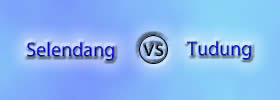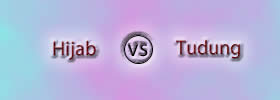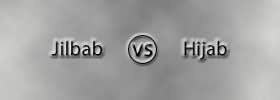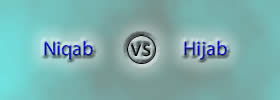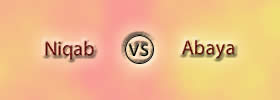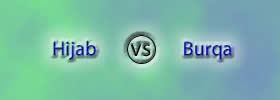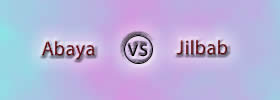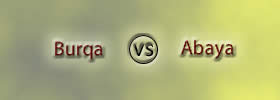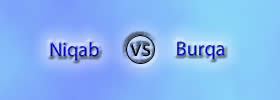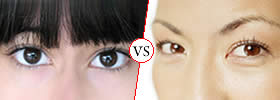Other - Cultures & Groups
|
Selendang and tudung are two different kinds of clothing that are available to Islamic women. Both, tudung and kerudung are part of the traditional Islamic hijab. It is a scarf which is used to cover the head, including hair and ears. It usually does not cover the face. A selendang is also a scarf; however it is used mainly as an accessory, rather than a strict religious headwear. It can be loosely draped around the shoulders or around the head. It need not cover the hair or the ears. |
|
Hijab and tudung are two different kinds of clothing that are available to Islamic women. A hijab or hejab actually refers to the rules of covering up. However, in the usual everyday context, the word is used to refer to a scarf which covers the head. In Malay, the term ‘tudung’ or ‘tudong’ literally means ‘cover’, however in English it is translated to mean ‘headscarf’ or ‘veil’. |
|
Jilbāb and hijab are two different kinds of clothing that are available to Islamic women. A hijab or hejab actually refers to the rules of covering up. However, in the usual everyday context, the word is used to refer to a scarf which covers the head. A jilbāb has two distinct meanings. The modern jilbāb is a type of clothing very similar to an abaya. It is a loose article of clothing worn over regular everyday clothing. However, in Indonesia, the term jilbab refers to a headscarf that covers the head, including hair and ears. |
|
Niqab and hijab are two different kinds of clothing that are available to Islamic women. A niqab or ruband is a part of the sartorial hijab and covers only the face. It is a form of a veil that covers the face including the ears and the hair. A hijab or hejab actually refers to the rules of covering up. However, in the usual everyday context, the word is used to refer to a veil which covers the head. |
|
Niqab and abaya are two different kinds of clothing that are available to Islamic women. A niqab or ruband is a part of the sartorial hijab and covers only the face. It is a form of a veil that covers the face including the ears and the hair. The headpiece may even cover some, if not all of the neck and chest area. An abaya can be described as a long robe or cloak, usually black in color. It is worn over the clothing and tends to cover the whole body. The styles of abaya vary, many often contain embroidery of some sort, while some may or may not include a hood. |
|
Hijab and burqa are two different kinds of clothing that are available to Islamic women. A hijab or hejab actually refers to the rules of covering up. However, in the usual everyday context, the word is used to refer to a scarf which covers the head. A burqa, on the other hand, is a loose outer garment that covers the whole body head-to-toe. |
|
Abaya and jilbāb are two different kinds of clothing that are available to Islamic women. An abaya can be described as a long robe or cloak, usually black in color. It is worn over the clothing and tends to cover the whole body. The modern jilbāb is a type of clothing very similar to an abaya. It is also a loose article of clothing worn over regular everyday clothing. However, in Indonesia, the term jilbab refers to a headscarf that covers the head, including hair and ears. |
|
Abaya and hijab are two different kinds of clothing that are available to Islamic women. A hijab or hejab actually refers to the rules of covering up. However, in the usual everyday context, the word is used to refer to a scarf which covers the head. An abaya, on the other hand, can be described as a long robe or cloak, usually black in color. It is worn over the clothing and tends to cover the whole body. |
|
Burqa and abaya are two different kinds of clothing that are available to Islamic women. An abaya can be described as a long robe or cloak, usually black in color. It is worn over the clothing and tends to cover the whole body. Similarly, a burqa is also a loose outer garment that covers the whole body; however a burqa is head-to-toe. In addition to the body, the burqa also covers the head and face. |
|
Niqab and burqa are two different kinds of clothing that are available to Islamic women. A burqa is a loose outer garment that covers the whole body head-to-toe. The aim of the burqa is to cover the shape of the body in front of males outside of the family. In addition to the body, the burqa also covers the head and face. A niqab or ruband, on the other hand, is not a full body covering. It is a part of the sartorial hijab and covers only the face. It is a form of a veil that covers the face including the ears and the hair. |
|
Dwarf and Midget are two names that refer to a person who suffers from dwarfism. Dwarfism is a medical condition due to which a person has abnormal growth. A person affected by dwarfism is usually less than 147 cm (4 feet 10 inches). Historically, the term midget was used to describe "proportionate dwarfs," while dwarfs could be any person affected by dwarfism, proportionate or disproportionate. Today, the term ‘midget’ is considered derogatory. |
|
Hippie is a subculture that was popular during the mid-1960s and was originally a youth movement that rose in the United States during the Vietnam War. Hipster is a subculture that refers to a group of people that are value independent thinking, counter-culture, progressive politics, an appreciation of art and indie-rock, creativity, intelligence, and witty banter. |
|
The rich have money and wealth; hence they can afford to spend frivolously other than spending on their basic needs, such as food, clothing and shelter. The poor on the other hand lack money and hence struggle to meet their basic needs and demands. |
|
Japanese face is generally longer and/or more oval and wider than the Chinese face. Hence, Japanese eyes tend to appear wider. Most Japanese women have single eyelids. Also, Japanese eyes tend to be angled upwards a little. Chinese tend to have round-shaped faces, while, typical Chinese eyes tend to have angled somewhat downwards. However, a number of Chinese eyes tend to be angled upwards, as well. |
Pages
 |
 |
 |
 |
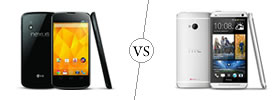 |
 |
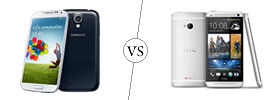 |
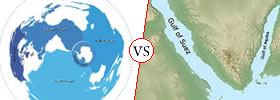 |

